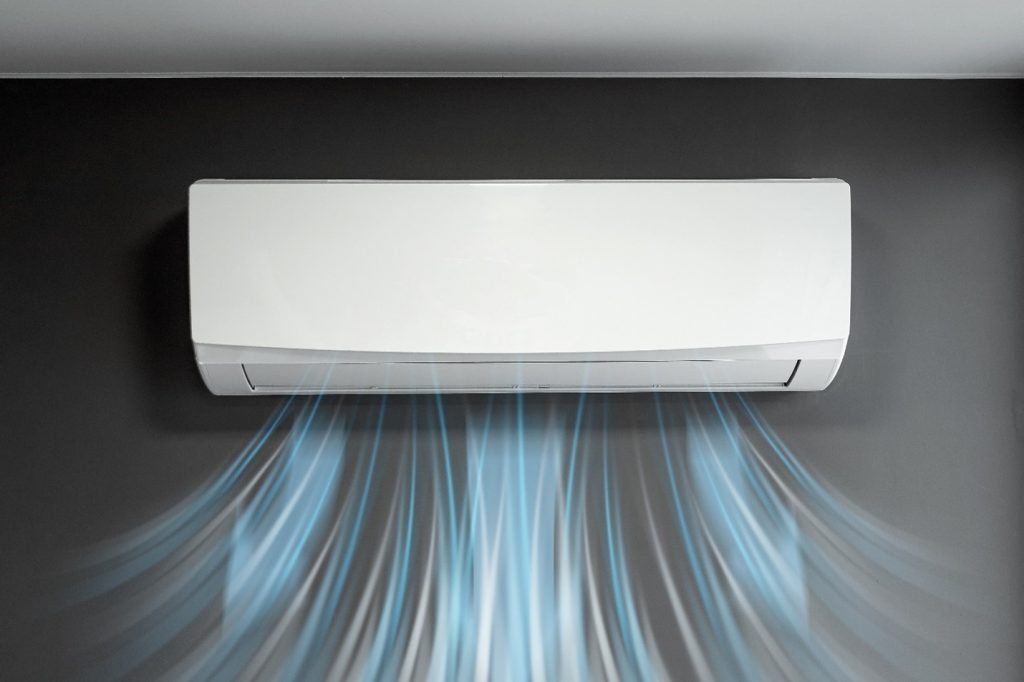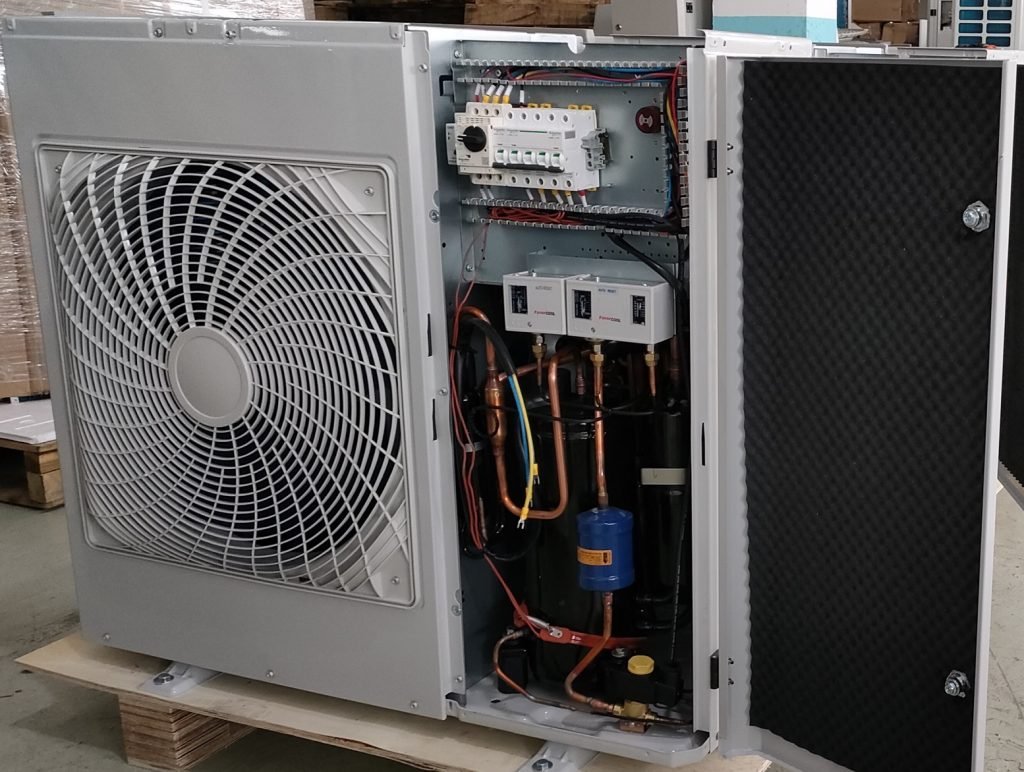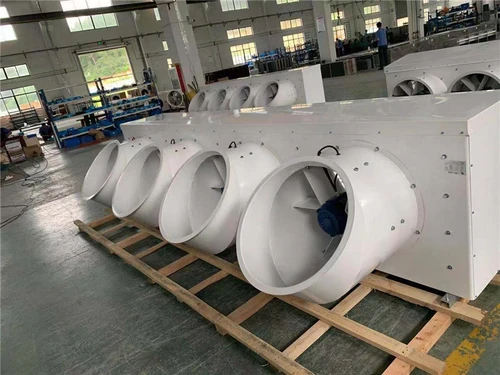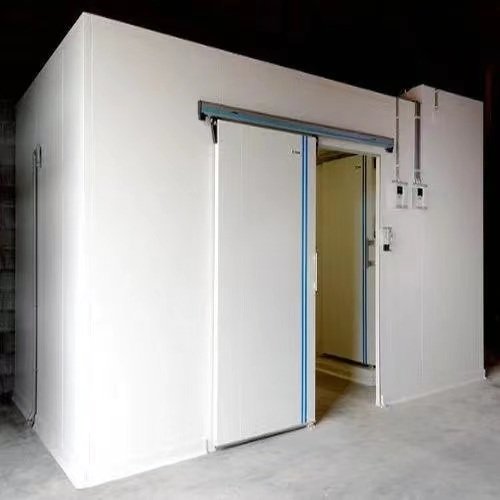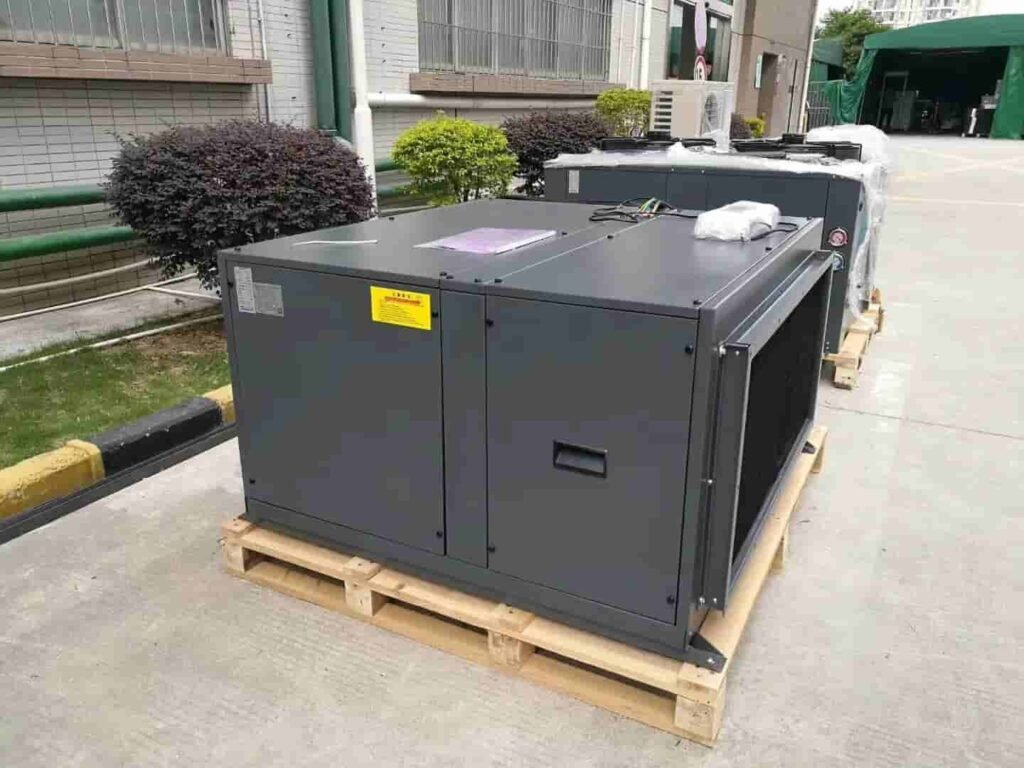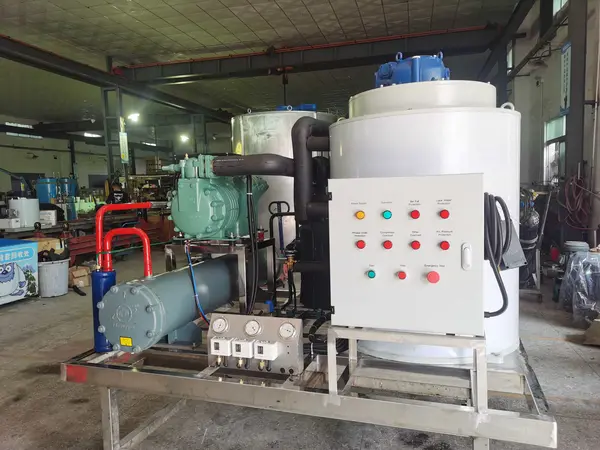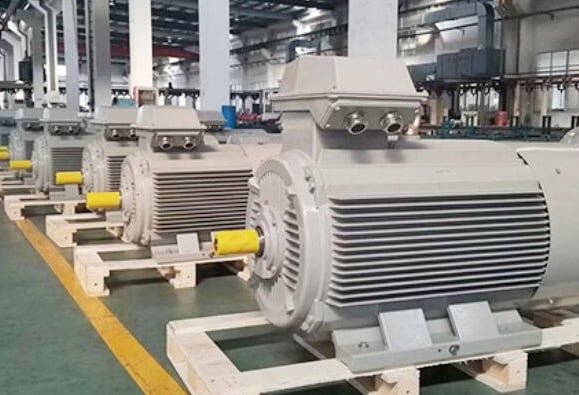果物や野菜の貯蔵寿命を延長することは、食品廃棄物を減らすために不可欠です, 栄養品質の維持, 新鮮な農産物の安定した供給を確保します. 米国で, 果物と野菜のほぼ半分が無駄になっています. 冷蔵室 保管所, これには、低温と湿度の維持が含まれます, 農産物の自然劣化プロセスを遅くするための最も効果的な方法の1つです. このガイドは、寒い部屋でのストレージ時間を最大化するためのベストプラクティスの概要を説明しています.
果物や野菜の種類を理解する
果物や野菜は、熟成挙動とエチレン生産に基づいて分類できます, ストレージに大きな影響を与えます:
-
クライマニックフルーツ: これらは収穫後も熟し続け、エチレンを生成します, 熟成を加速するガス. 例には、バナナが含まれます, リンゴ, 桃, とトマト. 寒い部屋に移動してエチレン生産を遅くする前に、これらを室温で熟成させることを許可します.
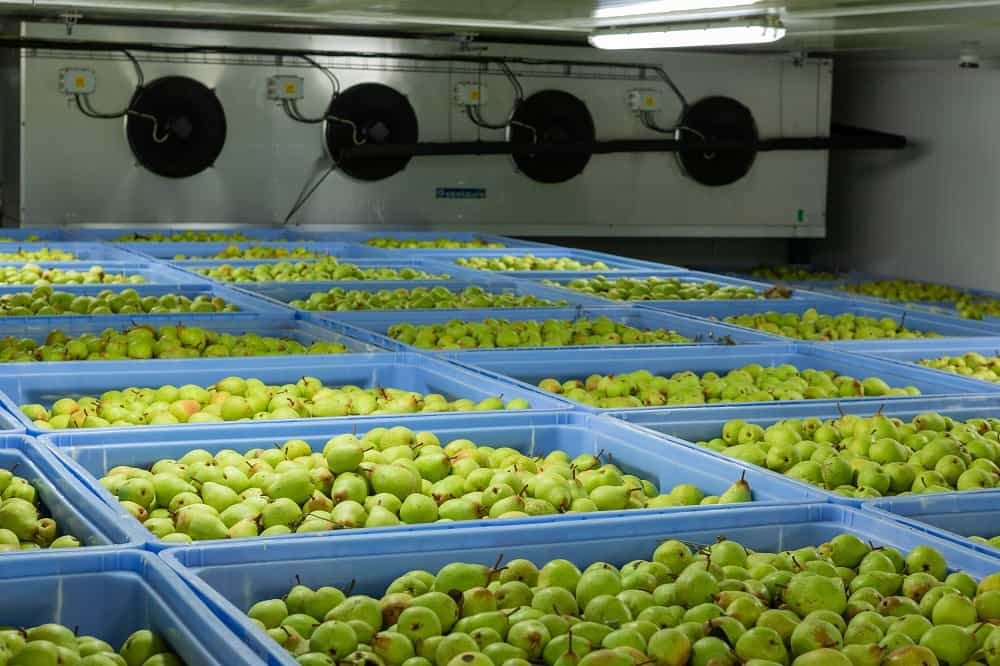
-
非微気がしない果物: これらは収穫後にさらに熟しておらず、エチレンに敏感です. 例にはブドウが含まれます, ブルーベリー, イチゴ, そして柑橘類. 新鮮さを維持するために、これらをすぐに寒い状態に保管してください.
なぜそれが重要なのか: クライマクテリックフルーツのエチレンは、非クリマクス性の果物やエチレン感受性野菜を引き起こす可能性があります (レタスやブロッコリーのように) 一緒に保管した場合、より速く台無しにします. 適切な分離は、効果的なストレージの鍵です.
コールドルームストレージのベストプラクティス
果物や野菜の貯蔵寿命を 寒い部屋, これらの一般的なベストプラクティスに従ってください:
-
温度管理:
-
ほとんどの果物と野菜は、温度32°F〜55°Fで保管する必要があります (0°C〜13°C). 涼しい季節の作物 (例えば, ニンジン, リンゴ) 32°F〜35°Fを好みます, 暖かい季節の作物 (例えば, トマト, サツマイモ) 怪我をするのを避けるために、45°F〜55°Fが必要です.
-
これらの範囲を維持するために、正確な温度制御を備えた冷たい部屋または冷蔵庫を使用してください.
-
-
湿度制御:
-
高い相対湿度 (80% 〜 95%) 水分の損失を防ぐために不可欠です, しおれや腐敗を引き起こす可能性があります. 一部の商品, 緑豊かな緑のように, 必要になる場合があります 95% 〜 100% 湿度.
-
湿度を維持する方法には、加湿器の使用が含まれます, 床を濡らします, または、水の容器を配置します 寒い部屋.
-
-
農産物の分離:
-
Climactericを保存します (エチレン生産) エチレン感受性アイテム. 例えば, リンゴやレタスからバナナを遠ざけて、早期の熟成や腐敗を防ぐ.
-
さまざまな種類の農産物のために、寒い部屋で別々の引き出しまたは棚を使用する.
-
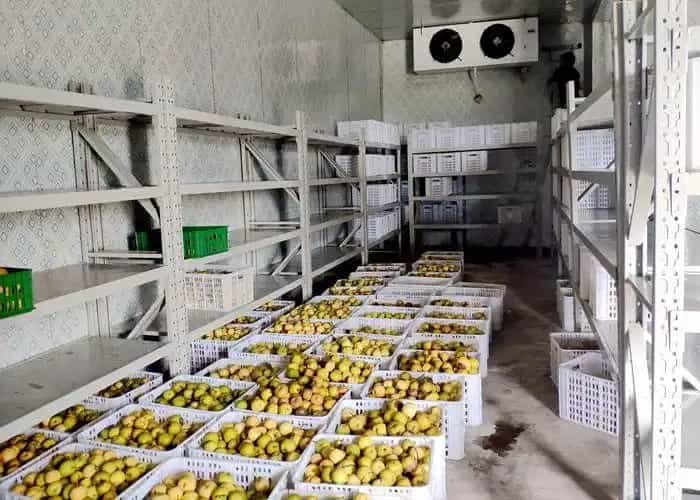
-
収納容器とバッグ:
-
閉じたバッグや容器にクライマク産物を保管しないでください, エチレンは腐敗を蓄積し、加速する可能性があるため. より良い空気循環のために穴あきバッグまたは開いた容器を使用してください.
-
非微気がしない農産物は、安全にバッグに保管できます, 彼らは重要なエチレンを生成しないので.
-
一般的な果物や野菜の特定の保管条件
異なる果物や野菜には、独自のストレージ要件があります. 以下は、一般的な商品の特定の条件の表です:
|
商品 |
温度 (°F) |
相対湿度 (%) |
ストレージ寿命 |
凍結点 (°F) |
|---|---|---|---|---|
|
りんご |
30–40 | 90–95 |
1–12か月 |
29.3 |
|
アスパラガス |
32–35 | 95–100 |
2–3週 |
30.9 |
|
ブロッコリー |
32 | 95–100 |
10–14日 |
30.9 |
|
ニンジン (成熟) |
32 | 98–100 |
7–9ヶ月 |
29.5 |
|
トマト (成熟, 緑) |
55–70 | 90–95 |
1–3週 |
31.0 |
|
サツマイモ |
55–60 | 85–90 |
4–7ヶ月 |
29.7 |
-
キーノート:
-
涼しい季節の作物 (例えば, リンゴ, ニンジン) 低温で保管できます (32°F〜35°F).
-
暖かい季節の作物 (例えば, トマト, サツマイモ) より高い温度が必要です (45°F〜55°F) 怪我をするのを避けるため, これは、水を浸したり腐敗したりするなどの症状を引き起こす可能性があります.
-
高湿度 (90% 〜 100%) ほとんどの野菜がしおれを防ぐために重要です.
-
取り扱いと準備のヒント
ストレージの前後の適切な取り扱いは、保存期間の寿命に大きな影響を与える可能性があります:
-
洗浄:
-
細菌の成長を防ぐために、果物や野菜を乾燥させます. 消費直前に洗ってください, ストレージ前ではありません.
-
スーパーマーケットとは異なり, レタスやブロッコリーのような野菜の換気を伴うミストシステムを使用する, 家の保管は、カビを防ぐために余分な水分を避けるべきです.
-
-
硬化:
-
いくつかの野菜, ジャガイモやサツマイモのように, 保管前の治療の恩恵を受ける. 暗闇の中で60°F〜68°Fで1〜2週間むしゃむしゃ, 傷を癒し、貯蔵寿命を改善するための十分な換気のある領域.
-
サツマイモを80°Fで1〜2週間硬化させる必要があります。.
-
モニターとメンテナンス
定期的な監視により、最適な保管条件が保証されます:
-
ツール:
-
温度計を使用します (例えば, 記録または最大/最小タイプ) 温度を監視します.
-
相対湿度を測定するために、湿度計またはスリングの心理メーターを使用してください.
-
-
メンテナンス:
-
腐敗の兆候を定期的にチェックし、罹患した農産物を除去して、腐敗のspread延を防ぐ.
-
で適切な換気を確保します 寒い部屋 空気循環を維持するため.
-
大規模な冷たい部屋用, コールドチェーンの弱点に対処します (例えば, 輸送または貯蔵中の温度変動) 品質を維持するため.
-
避けるべき一般的な間違い
これらの一般的なエラーを避けて、ストレージ時間を最大化します:
-
クロマクテリと非閉塞性の農産物を一緒に保管します: これは、敏感なアイテムの早すぎる熟成または腐敗につながる可能性があります.
-
エチレン産生の果物に閉じた容器を使用します: エチレンの蓄積は腐敗を加速する可能性があります.
-
間違った温度: 温度が低すぎる暖かい季節の作物を貯蔵すると、怪我をする可能性があります, 涼しい季節の作物をより高い温度で貯蔵することは、より速い腐敗につながる可能性があります.
-
湿度制御を無視します: 湿度が低いと、水分の損失が発生する可能性があります, 過度の湿度はカビの成長を促進する可能性があります.
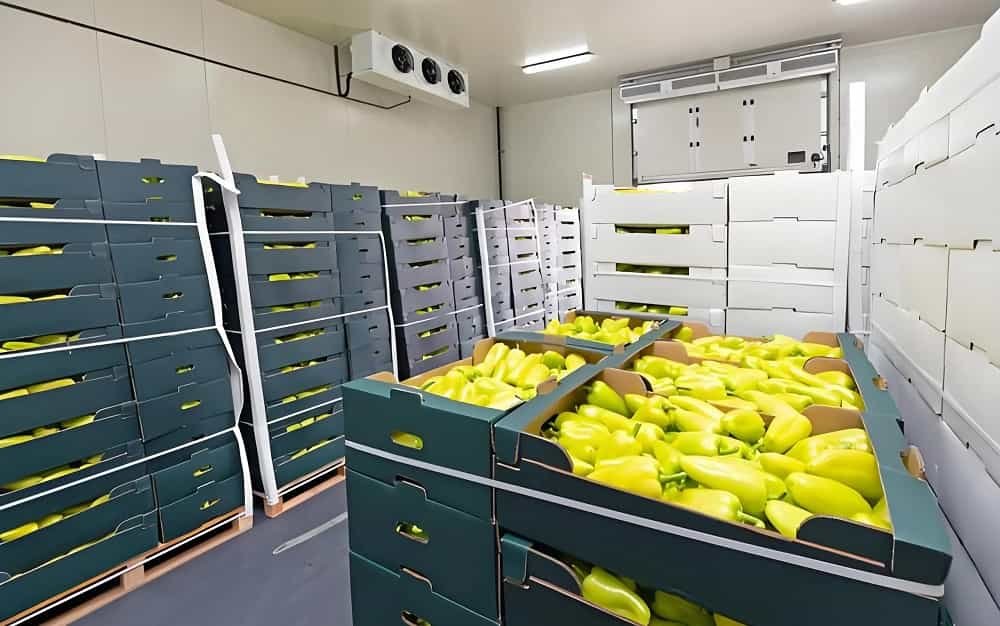
結論
これらのベストプラクティスに従うことによって, あなたはあなたの果物や野菜の貯蔵寿命をで大幅に延長することができます 寒い部屋, 廃棄物を減らし、新鮮な安定した供給を確保します, 栄養価の高い農産物.
各タイプの農産物の特定のニーズに合わせて保管条件, それらを注意深く処理します, 定期的にストレージ条件を監視します.
小さな調整は、品質と新鮮さを維持することに大きな違いをもたらす可能性があります.
コメント?
ようこそメッセージを残すか、再投稿してください.
重要な引用:



